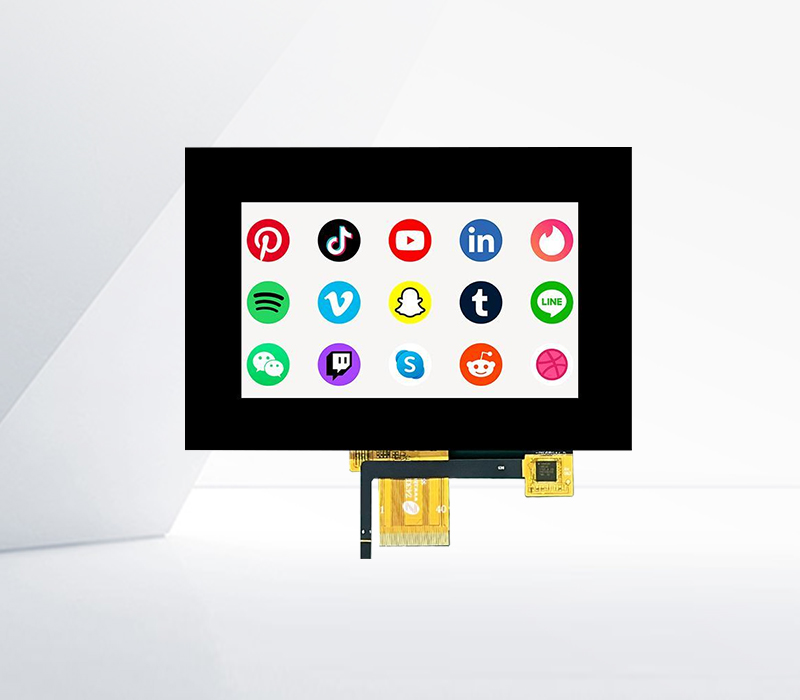




1. Assembly process:
The main tools for assembly are hammers and wrenches, which are used to tighten the frame feet. The sequence of assembly operations is to first assemble all
The tools and raw materials are orderly placed on the workbench. Next, place the shell correctly on the workbench according to the process card instructions. If there are assembly fixtures, place them on the fixtures as required, paying attention to the correct orientation of the shell. Next, remove the protective film from the LCD screen, wipe the electrodes clean with dust-free paper, confirm the direction, align with the frame position according to the process card instructions, install the housing and press the zebra stripes tightly, and use a special assembly tool to fix the housing and circuit board. Pay attention to twisting the frame feet to a 450 degree angle, do not gnaw on the board or break the wire, and ensure that the frame feet are in parallel contact with the PCB board. Finally, remove the assembled finished product from the workbench, apply protective film, and place it on the turntable. Pay attention to making the screens and boards face each other to avoid scratches. The product assembly should be inspected by the inspector, and if it is found to be unqualified, it should be reassembled.
2. Assembly method:
The purpose of assembly is to match the electrodes of the screen and circuit board one by one, to achieve electrical performance coordination. However, due to the fact that the screen is not in direct contact with the circuit board and uses conductive adhesive strips as a medium, the screen and board cannot be visually matched, resulting in misalignment between their corresponding electrodes. The connection of the corresponding electrodes between the screen and the circuit board during the assembly process is called alignment. In assembly, the alignment between the screen and the board, as well as the alignment between the shell and the board, is mainly used to achieve the correspondence between the screen and the board during assembly. As an intermediate medium and a corresponding standard between the screen and the shell, the shell plays a significant role in alignment. The main alignment methods include edge alignment, pinhole alignment, and middle alignment.
(1) Edge alignment:
Edge alignment refers to the use of a short edge of the frame to establish a one-to-one alignment standard between the LCD screen and the electrodes on the circuit board
Implementing assembly alignment, edge alignment actually refers to the alignment method between the screen and the shell. Since edge alignment refers to the alignment method between the screen and the shell, there are different alignment methods for different situations of the screen and the shell. For shells, there are many situations based on different design requirements, such as symmetrical shells, shells with gaps on one side and no gaps on the other, and the direction of the shell feet. These can all be used as benchmarks for edge alignment of shells, and can be described as open edge alignment, non open edge alignment, and straight edge alignment. The alignment edges of the screen only have two types: open edge alignment and non open edge alignment, so they are often referred to as open edge alignment and non open edge alignment. When they are combined together, the combination of the two is used, such as: the sealing edge of the screen is at the opening edge of the shell, the non sealed edge of the screen is at the non opening edge of the shell, and the opening edge of the screen is at the edge of the shell. Based on the alignment methods of some screens mentioned above, combined with the alignment methods of circuit boards and shells, such as assembling with one or two shell legs of the shell as the alignment reference. This completes the assembly based on edge alignment, which is suitable for modules with wider electrodes.
(2) Pinhole alignment:
For the assembly of screens and circuit boards with narrow electrodes, such as modules with electrode widths of 0.35mm and 0.5mm, it is necessary to
There is a more precise alignment method to reduce the error between the screen and the circuit board during assembly of the opposing electrodes, improve the yield rate, and reduce consumption. Therefore, the pinhole alignment method is adopted. The pinhole alignment method is achieved by finely calculating and drilling two alignment holes on the shell as the reference for screen alignment. When assembling, place the sealed or unsealed edge of the screen tangent to the outer edges of the two alignment holes into the shell. When placing the circuit board, align the two assembly holes on the circuit board so that the positioning holes on the shell are coaxial with the positioning holes on the circuit board. At this point, the electrodes on the circuit correspond one-to-one with the electrodes on the screen, thus achieving assembly alignment.
